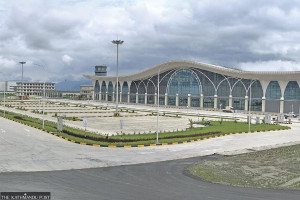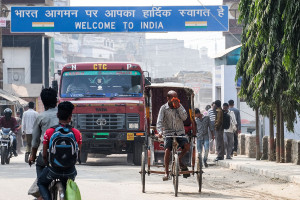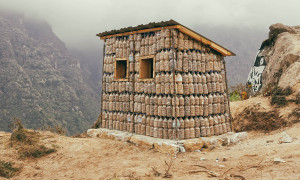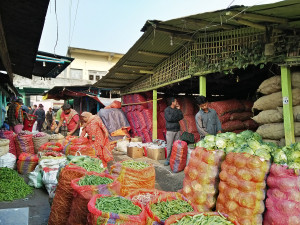Money
Home appliances become dearer as input costs soar
According to electronic goods dealers, prices have increased by up to 30 percent in the local market.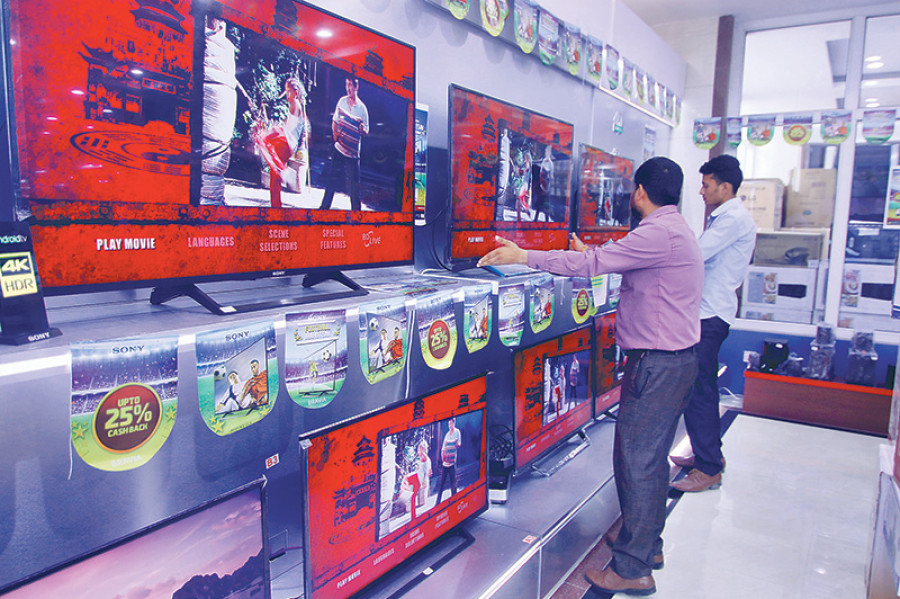
Krishana Prasain
Home appliances like TV, air conditioner, refrigerator, washing machine, microwave and vacuum cleaner have become dearer in the Nepali market, which manufacturers attribute to a rise in prices of raw materials since the beginning of this year.
According to electronic goods dealers, prices have increased by up to 30 percent in the local market.
Prices of raw materials like TV panels, copper, aluminium and steel have surged in the global market, local dealers said, explaining why electric appliances have become costlier.
Freight charges have also soared, and all these increased costs have been passed on to consumers, they said.
“Prices have risen by 30 percent on average compared to pre-pandemic days,” said Bishnu Gyawali, assistant general manager of CG Electronics.
“The price of television sets has increased by almost 30 percent due to a shortage of TV panels,” Gyawali said. The main reason why appliances have become more expensive is higher costs of raw materials and a sharp rise in cargo rates, he said.
“The pandemic pushed up demand for panels that are used in laptops, mobile phones, tablets, light-emitting diodes (LED) and liquid crystal displays (LCD) globally as office-goers switched to working from home, education institutions launched online classes, and people conducted virtual meetings and webinars because of infection fears.
“Factory workers stayed on extended leave, resulting in a drop in production even as demand for electronic goods rose steeply, prompting manufacturers to jack up prices,” he said.
At the same time, a shortage of cargo ships in China sent freight charges soaring by 400 percent. All this resulted in higher prices of home appliances.
CG Electronics deals in electronic products from brands like LG, Godrej, TCL, Sansui, Kent and Black and Decker, Gyawali said.
“Consumer electronics imported from China cost more than Indian products,” he said. “Prices of Indian goods have increased by 10-15 percent while Chinese goods have become dearer by more than 30 percent due to high freight charges,” he said.
Nepal imports most of its requirement of consumer electronics from China and India and some from other countries.
“TV prices have been increasing continuously from mid-October last year,” he said.
The cost of open-cell display panels has increased significantly due to the global shortage of integrated circuit. Prices soared by 35 percent in the international market in a month. Open-cell panels are used to manufacture LED and LCD screens, and account for 60 percent of the cost of a television set.
Electronics dealers said there was no sign of prices declining any time soon, and said prices might increase further until the disrupted global supply chain stabilises.
Ganesh Raj Pandey, senior manager of Samsung electronics at Him Electronics, said retail prices would definitely increase in the coming days with a rise in raw material costs and freight charges.
“Most companies are jacking up their prices gradually in a bid to avoid alarming the market and scaring away potential buyers,” he said.
Pandey said that the cost of goods imported from third countries like washing machines, LED television sets and refrigerators had swelled by more than 10 percent.
According to Gyawali, refrigerators have become costlier by 15 percent, washing machines by 20 percent, air conditioners by 5 percent, vacuum cleaners by 20 percent, microwaves by 20 percent, deep fridges by 25 percent and kitchen appliances like rice cookers, mixers and grinders by 40 percent across all brands. Indian makers of TVs and washing machines are set to increase prices by 5-6 percent due to an increase in input costs.
According to Indian media, almost all electronic goods manufacturers in India have decided to increase prices of electronic products from April.
“This is the second increase in prices of appliances in three months. In January, many companies increased prices by 20 percent,” he said. Decreasing raw material imports from China has also impacted appliance prices in India. The price is expected to rise in the coming days.
Indian media reported that air conditioner manufacturers are planning to raise prices by 4-6 percent which translates into price increases of INRs1,500 to INRs2,000.
Copper prices have reached record highs due to which makers of air conditioners, fridges, coolers and fans have increased their price tags.
“Demand for home appliances has not declined despite the rise in prices,” Gyawali said. “The grey market has almost come down to zero. Returning migrant workers used to bring around 500 TV sets daily, and this has decreased. Sales have not fallen in the market,” he added.
Pandey expects sales to slide in the coming days when prices rise steeply. “It will take time for sales to stabilise. Maybe they will increase when festival shopping begins during Dashain,” he said.




 10.12°C Kathmandu
10.12°C Kathmandu






